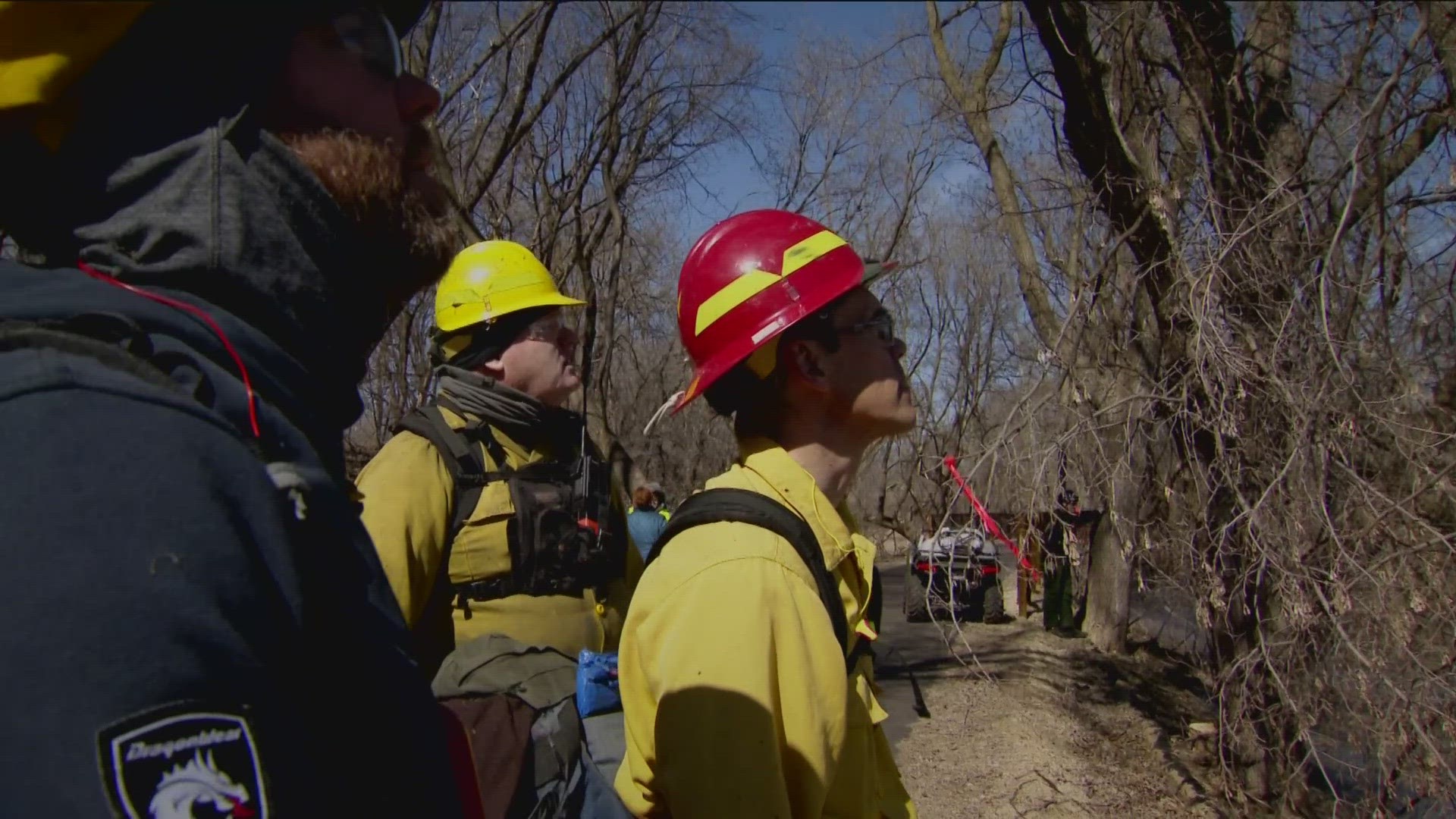ST PAUL, Minn. — On Monday, the National Park Service conducted prescribed burns at Coldwater Spring within the Mississippi National River and Recreation Area.
It's a protected area atop a bluff located south of Minneapolis and near the Minneapolis-St. Paul International Airport.
Conditions had to be just right because with the dry winter so far, experts say the risk of wildfires will be especially high this year.
In fact, this winter was one for the record books. It was the warmest ever and the amount of snow was also near record lows.
"We have the right humidity, there’s no snow cover and the fuels are ready to burn for us," said NPS wildland firefighter Adam Muilenburg.
Prescribed burns not only help restore the native landscape, they also help guard against wildfires. The fire removes dry fuel at a time when experts say 50 fires have already been reported in Minnesota. The prairie grasses at Coldwater Spring are burned intentionally every three to five years.
"As soon as there's rain and moisture, it's probably going to see green vegetation start popping up through the prairie here," said Muilenburg.
However, NPS Fire Weather Program Manager Steven Marien, is predicting that this situation may not persist through the summer. He says the super El Niño weather pattern that sparked this dry winter will transition to a cooler, wetter La Niña pattern as soon as this month.
"It does look like, and people aren't going to want to hear this, like we're kind of switching in the shorter term to more of a winter-type scenario," said Marien. "I mean, there’s a potential for quite a bit of snow this weekend."
He says the shifts between weather patterns can typically last between six months to a year, and that if this change plays out, it would be abnormally fast. But Marien says it's also too soon to tell how it might potentially impact the summer season.
"Through the end of March, it looks like we'll have at least fairly good chances at receiving more precipitation up here," said Marien.
In the meantime, officials are reminding people to be extra cautious as the fire risk persists for now.
Watch more local news:
Watch the latest local news from the Twin Cities and across Minnesota in our YouTube playlist:
WATCH MORE ON KARE 11+
Download the free KARE 11+ app for Roku, Fire TV, Apple TV and other smart TV platforms to watch more from KARE 11 anytime! The KARE 11+ app includes live streams of all of KARE 11's newscasts. You'll also find on-demand replays of newscasts; the latest from KARE 11 Investigates, Breaking the News and the Land of 10,000 Stories; exclusive programs like Verify and HeartThreads; and Minnesota sports talk from our partners at Locked On Minnesota.
- Add KARE 11+ on Roku here or by searching for KARE 11 in the Roku Channel Store.
- Add KARE 11+ on Fire TV here or by searching for KARE 11 in the Amazon App Store.
- Learn more about the KARE 11+ app for Apple TV in the Apple App Store.
- Learn more about KARE 11+ here.

